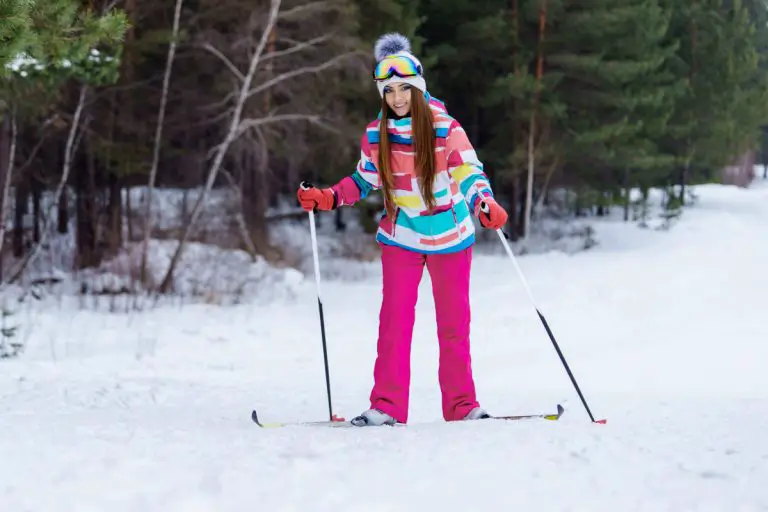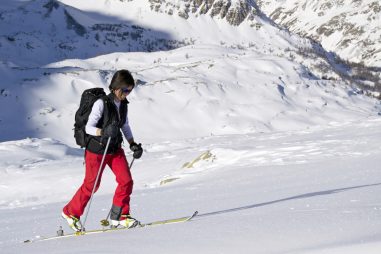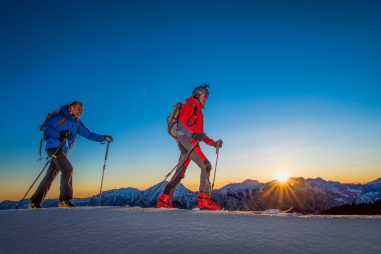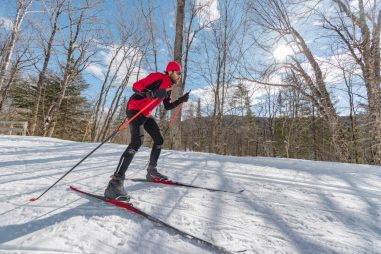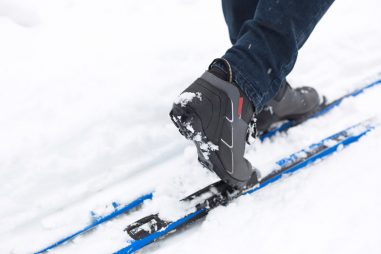So you’ve planned your first cross country ski trip and you’re looking forward to this new adventure. But before heading out into the great outdoors, you need to wear the right gear. How you dress for cross country skiing will spell the difference between fun and misery.
Because cross country skiing is an aerobic sport, you generate a lot of body heat. You need to protect yourself from the cold and at the same time, allow your body to cool down. Your choice of clothing should also give you enough range of motion to ski properly.
Picking the wrong clothes can lead to health concerns or restrict your movement. This could end your trip earlier than expected. Don’t let that happen with this guide on how to dress for cross country skiing.
How Do Cross Country Skiers Stay Warm?
Cross country skiers stay warm by wearing thin layers of clothing. This way, they’re protected from the cold without trapping their body heat.
Cross country skiing is a highly aerobic activity that quickly increases your heart rate. Wearing something too thin can make you too cold. You may even get hypothermia once you stop moving.
But wearing something too thick can prevent heat from escaping. This can cause your body to overheat in the middle of your session.
By wearing thin or lightweight layers, you can adjust by adding or removing layers as needed.
How Do Cross Country Skiers Keep Their Feet Warm?
Ideally, you should wear a thin pair of mid-calf socks for cross country skiing. The length covers your feet, ankles, and part of your legs. The thin layer lets your feet breathe and prevents overheating.
Some skiers wear two layers of socks. You can do this too but it increases the risk of blisters and can restrict blood circulation. And poor circulation can lead to colder feet.
Another way to keep your feet warm is to use waterproof boot covers. This protects your feet from getting damp and getting too cold. But the downside is that putting your boots on becomes more challenging.
How Do Cross Country Skiers Keep Their Hands Warm?
Skiers wear gloves to keep their hands warm.
Gloves come in two thicknesses. Thin gloves are for high-intensity training. This allows heat to easily escape the body. They’re also preferred during warmer conditions.
Meanwhile, thick gloves are for lower intensity rides and colder conditions.
When choosing a glove, fit also matters. One that’s too loose will let the cold in. If it’s too tight, it can trap heat or sweat.
Some gloves have pockets for hand warmers. You can opt for those if you want room for extra warmth.
What Clothing Is Most Suitable for Cross Country Skiing?
For cross country skiing, wearing layered clothing is the way to go. Choosing versatile pieces can give you more options for regulating body heat.
Jackets, vests, and other lightweight winter clothing are good pieces to start with. When it comes to materials, choose those that can handle moisture and offer wind or water protection.
How Many Layers Do You Need for Cross Country Skiing?
Skiers usually wear three layers for their upper body when cross country skiing. With layered clothing, it’s easy to add or remove layers when needed. This way, you can adjust to how cold or warm you’re feeling.
Here’s a brief description of each layer:
- Base Layer: often made of synthetic material with sweat-wicking and quick-drying properties. By moving the sweat away from the body, you won’t feel cold and reduce the risk of hypothermia.
- Middle Layer: this layer is for warmth. You can go for a lightweight winter jacket, vest, or fleece sweater.
- Outer Layer: another layer for warmth and protection from the elements. Wear a water-resistant and windproof jacket so you don’t get cold. However, it should still be breathable so it won’t trap heat.
What Pants Are Good for Cross Country Skiing?
Running or yoga pants are good choices for cross country skiing. They’re usually made of light, stretchable, and breathable material. This won’t restrict your movements at all.
You can wear this over a base layer of tights for added cold protection. And like your upper body base layer, it should be able to get moisture away from your body.
You can also opt for cross country skiing pants which are specifically designed for the sport.
Are Cross Country Ski Pants Waterproof?
Most ski pants have waterproof properties. However, the waterproof levels vary. Depending on where you’ll be skiing, you’ll need a higher waterproof value if the snow tends to be wet.
The material also affects waterproof effectiveness. Some ski pants have a soft material that’s more comfortable and stretchy. But they aren’t as good as keeping water away.
Can I Wear Jeans Cross Country Skiing?
It’s not a good idea to wear jeans for cross country skiing. They’re heavy and will absorb sweat or water. This will only make you feel cold. Also, the stiffer material restricts your movements.
Can You Wear Leggings Cross Country Skiing?
You can wear leggings if they have quick-drying and moisture-wicking properties. But since normal leggings aren’t windproof, you can’t wear this as an outer layer. So you can wear your leggings under ski pants.
Or better yet, you can go for ski tights/leggings instead. Designed for cross country skiing, they have the properties you need for a safe and enjoyable ride.
What to Wear Cross Country Skiing First Time?
For first-timers, layering is essential. Remember that as you move, your body will generate heat and you’ll sweat. You should wear lightweight layers to let heat escape. Those with sweat-wicking materials are a plus as it keeps moisture away from your skin.
Your choice of clothing should fit your body well so your movements aren’t restricted. Your outer layer should be water and windproof for additional protection.
Gloves and hats or beanies are necessary to keep your fingers and ears from freezing.
Do Cross Country Skiers Wear Helmets?
It’s not necessary to wear helmets for cross country skiing. Since you don’t ski at high speeds on steep descents, the risk of serious injury is low. You can ski on flat terrain at your own pace.
In case you need to descend a hill, you can always take off your skis and walk.

